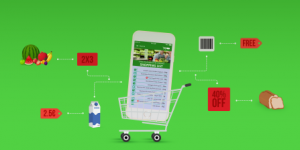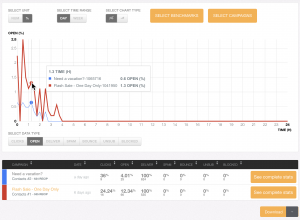— November 30, 2017

One of the biggest challenges of quantifying the benefits of customer success is that many organizations fall short on how to prolong the customer success continuum. The customer maturity phase will happen and you won’t realize how much of your business needs to change and adapt to this new phase. Below are some red signals that should immediately alert you and tips to help you gain early insight into being proactive in avoiding the impact of growth pitfalls.
1. Loss of Revenue
Churn on the rise but you can’t explain why? Suffering from revenue loss but don’t understand the cause? Customer churn metrics and associated revenue loss is often the primary factor driving change in how to approach managing a customer. If you are spending more time on reactive management but not seeing the expected results, you need a means of identifying customer churn, revenue loss, and percentage of sales time spent after the sale.
2. Loss of a Highly Visible Customer
Losing a strategic customer can have a very negative impact on a business and sales organization. And to fall back onto Murphy’s Law, everything that can go wrong will go wrong-i.e. in a startup navigating the right market fit with the right product offering, the loss of a customer will likely happen in the early phase of business development. Once the customers are lost brand after brand, reputation starts to suffer. You have now arrived at a point where a very structured delivery and customer management is not only required but also expected by your high-end customers. Being quick on your feet won’t cut it anymore. A responsible representation of their brand is now required of you. Make sure to identify lost brands and the brands at risk and associated impact they’ve had on the business to date.
3. Drop in Customer Satisfaction
It’s hard to believe that customer satisfaction tends to get ignored as you transition from one phase to the next, but ultimately this item is often drowned out by what feels like other urgent investments. To counteract this, have an executive management relationship program early on in the development cycle tending and preserving it through the growth phase as this is a tool you can use to your extreme advantage.
4. Operational Cost of a Strained Sales Organization
Hear that loud screaming? Yeah. That’s your Vice President of Sales screaming at the top of their lungs because they are so frustrated with having to deal with customer concerns and your inability to meet and deliver on their contracts. The likelihood that your sales organization is struggling to meet their sales revenue targets because of an inability to divert focus off of supporting customers post-sale, is very high. This may very well be something they never budgeted or planned to do. Make sure to identify the percentage of post-sales account management time spent, the cost associated with it, and ultimately the missed new sales opportunities.
5. Stalled Revenue Growth
We’ll let you in on a little secret. The keys to success in a SaaS business is: protecting MRR and stimulating predictable revenue growth. If you can figure out how to do that, your business will prosper. If your customers are not completely satisfied with your product’s value, they are not going to benefit from the product in its entirety or enable its full potential. It is incredibly difficult to grow revenue if your customers are not leveraging key features because they aren’t aware of them. Never underestimate the happiness factor when it comes to growing your revenue and make sure to identify any survey results that can support this. Good, healthy customer relationships are based on clearly demonstrating how your product or service is going to make them successful, and then executing on your plan. The bonus points come from showing them the results, within control corrective adjustment when needed, and impressing them by your listening abilities and responsive actions while leading them to business innovation.
Using the right tool for the right job, in this case, means using the right skill for the right challenge. Customer Success will lead the customer on the day-to-day deployment and operations of their implementation of your product in a controlled, measured and proactive approach. Each day will bring revenue growth opportunities that will be seeded by your CSM and identified to your sales team for development and closing – together forming the perfect well-rounded customer account team.
Business & Finance Articles on Business 2 Community
(56)







